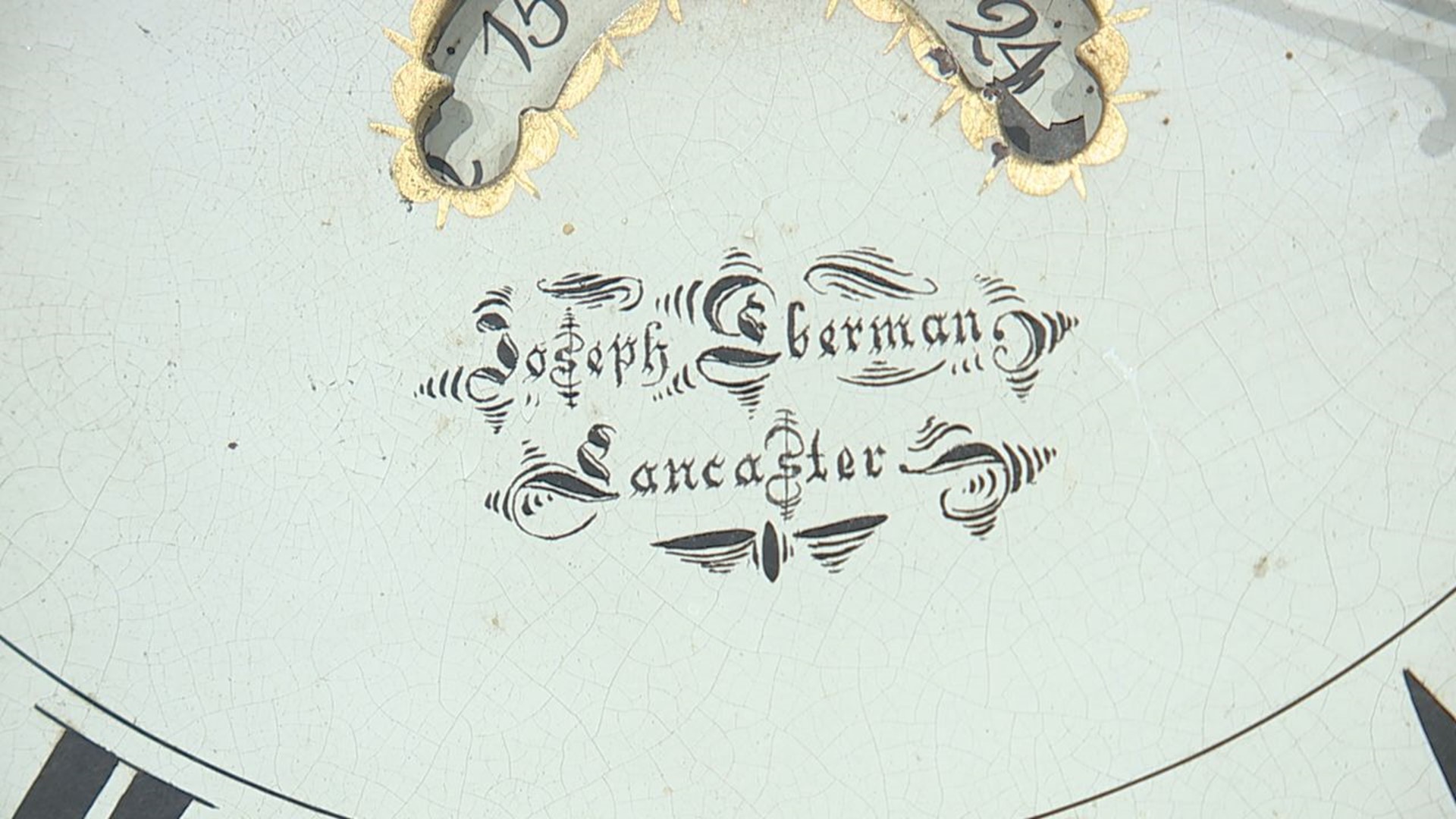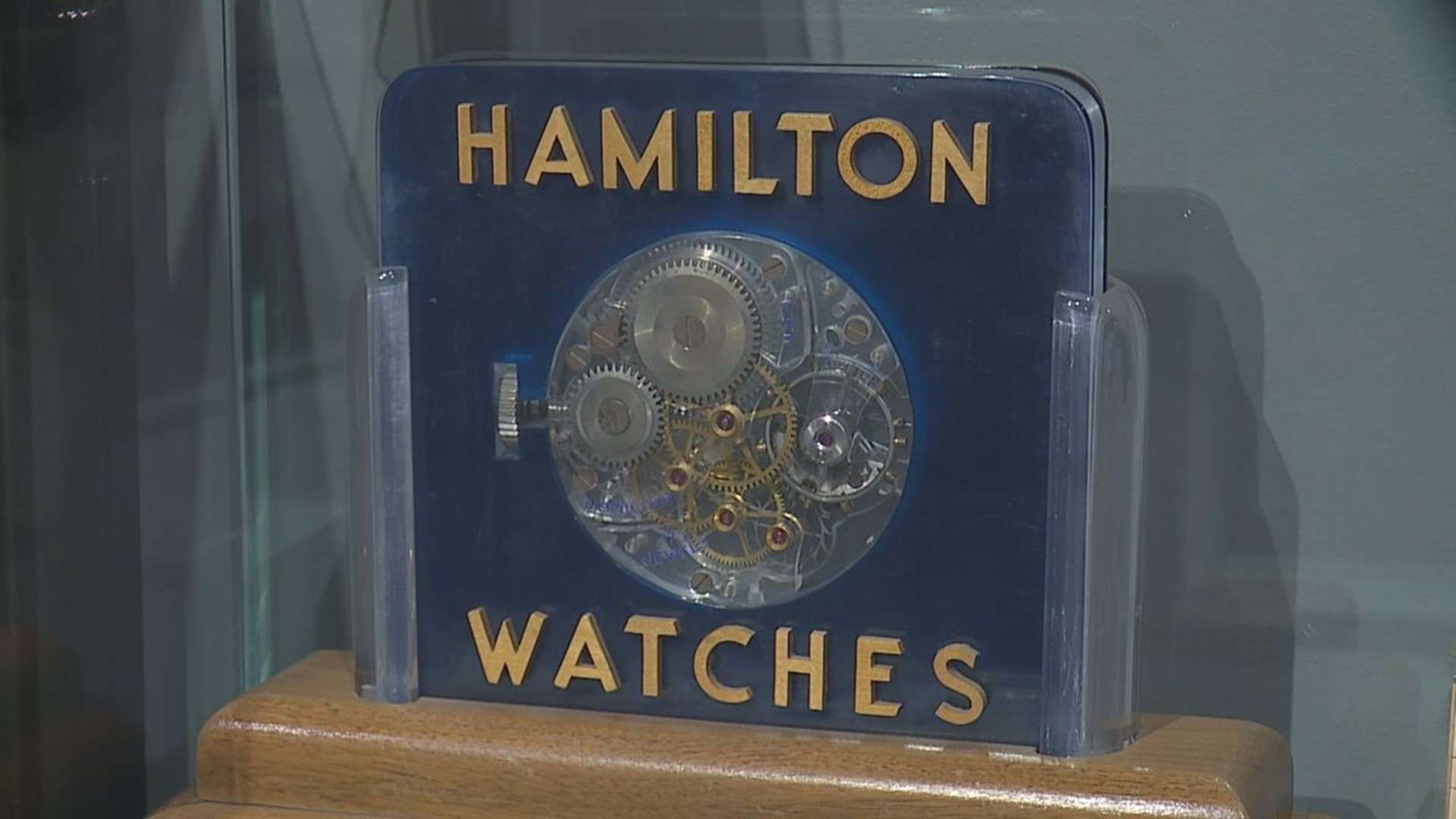COLUMBIA, Pa. — As the world looks towards their watches and clocks to count down to the new year, if you turn back time, you'll see central Pennsylvania's impact when it comes to horology. That's the science of measuring time and the art of making instruments for indicating time.
America began as a melting pot, and so did what you'd find in clocks early in this region.
"Let's say, you look at a Pennsylvania tall clock from the early 1800s, you have English components that were made in Birmingham and you have German styles of cabinetry," said Rory McEvoy, the executive director of the National Association of Watch & Clock Collectors Inc. "So yes, there is a blending of styles. There are Dutch styles, as well."
Lancaster was working towards becoming internationally known for the smaller, pocket-sized options. But before that, it had to start with J.C. Adams and E.H. Perry.
"Adams and Perry, along with the Lancaster Watch Company, and a few other companies failed, so sort of rising out of the ashes of their failure in 1892, you get the Hamilton Watch Company," stated NAWCC associate editor Michael Schwartz.
It took 18 years, starting in 1874, to go from the start of the Adams and Perry Watch Manufacturing Company to the Lancaster Watch Manufacturing Company, and ultimately the start of a watch that's still ticking today.
"It wasn't until Hamilton came on the scene that Lancaster, as a town, joined the global community of horology," said Schwartz. "It wouldn't be absurd to say London, Geneva and Lancaster in the same breath."
The growth and what Hamilton made shared strong bonds with another Keystone State staple: the railroads.
"They're inextricably connected," added Schwartz. "Accurate timing was the only safety device in the 19th century. So, if your watch was off by a little bit, that could be the difference between your train crashing into another one or making it safely to its destination."
And as the world changed, Hamilton answered the call.
"The U.S. government contracted Hamilton to produce several things," recalled Schwartz. "The most important were marine chronometers. What Hamilton did was really impressive in not just making a mechanical timepiece whose accuracy has never been surpassed, but also figuring out a way to mass produce them."
"It was the Hamilton Company with their incredible research into material science, in particular," said McEvoy. "All of the components of this marine chronometer movement were made in-house at Hamilton's Factory in Lancaster."
Hamilton was bought by another company in 1966 and moved all their manufacturing to Switzerland, but their fingerprint is still felt in the region.
"The number of folks who still have family connections to Hamilton is just huge," Schwartz said. "Because of Hamilton's longevity in the community, we're still reaping the benefits of that."
So as you're counting down to 2024, just remember, whether it's a horologist who learned in Lancaster County, or the rich history that still stands today, this region's impact is timeless.



